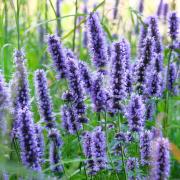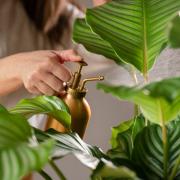There is a lot to miss about the summer weather including being able to hang washing outside to dry (you can’t beat the freshly washed smell).
As autumn arrives, you might be putting your clothes out to dry less and less as the days go by, as the temperature begins to drop - not to mention the increased chances of heavy rain and storms.
Over the next few months, it means endless amounts of laundry will have to be dried inside, from being draped on piping-hot radiators to hanging off the back of every chair around the house.
Condensation from wet clothes means the risk of mould increases which can cause permanent damage within your home.
However, according to the experts at Big Bathroom Shop, there are three houseplants that can help regulate humidity levels, reduce condensation and prevent mould, specifically in your bathroom.
3 houseplants that can help reduce mould and condensation
Ivy
Ivy is one of the easiest houseplants to keep and one of the best for cleansing the air.
Big Bathroom Shop expert Rikki comments: “They enjoy warm, humid environments, so they are great for bathrooms.
“They also don’t need too much sunlight and can survive well within the shade, making them ideal for those with windowless bathrooms, or those with smaller windows, unlike many other houseplants.
“Ivy's ability to cleanse the air is particularly impressive, with reports of English Ivy tackling up to 78% of airborne mould.”

Fern
When it comes to picking a fern for your bathroom, some will thrive and perform better than others, with Boston or sword ferns preferable for tackling condensation.
This evergreen plant not only helps to remove harmful toxins, but it improves humidity by helping to restore moisture to the air naturally too.
Some will require more humidity than others, but in general, most fern species make perfect additions to a bathroom.
Ferns require proper and regular drainage but thrive in humidity, and so Rikki advises to “hang ferns within the shower to get daily quench of thirst.”

Spider plant
Robust, low maintenance and another plant known to improve a bathroom’s environment is the spider plant.
The spider plant is known to be effective in cleaning indoor and contained air by absorbing chemicals.
Its thick roots allow for inconsistent watering, making it a go-to option for those with a busier lifestyle.
Rikki advises to “place spider plants on a windowsill, here they can soak up more natural light and drape beautifully down towards your bath or sink."



























